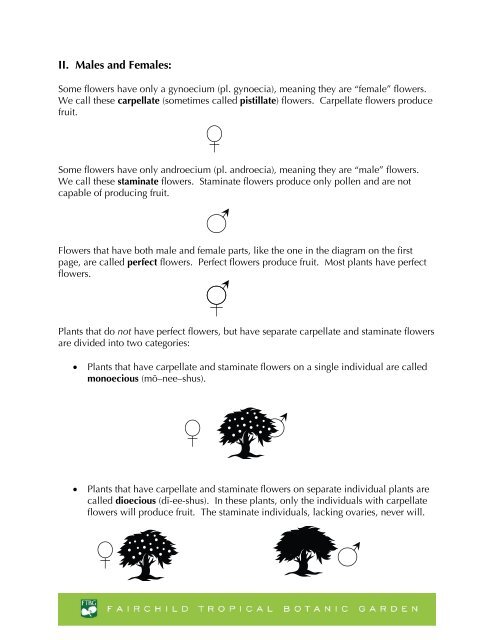Flower Structure and Function
You also want an ePaper? Increase the reach of your titles
YUMPU automatically turns print PDFs into web optimized ePapers that Google loves.
II. Males <strong>and</strong> Females:<br />
Some flowers have only a gynoecium (pl. gynoecia), meaning they are “female” flowers.<br />
We call these carpellate (sometimes called pistillate) flowers. Carpellate flowers produce<br />
fruit.<br />
Some flowers have only <strong>and</strong>roecium (pl. <strong>and</strong>roecia), meaning they are “male” flowers.<br />
We call these staminate flowers. Staminate flowers produce only pollen <strong>and</strong> are not<br />
capable of producing fruit.<br />
<strong>Flower</strong>s that have both male <strong>and</strong> female parts, like the one in the diagram on the first<br />
page, are called perfect flowers. Perfect flowers produce fruit. Most plants have perfect<br />
flowers.<br />
Plants that do not have perfect flowers, but have separate carpellate <strong>and</strong> staminate flowers<br />
are divided into two categories:<br />
<br />
Plants that have carpellate <strong>and</strong> staminate flowers on a single individual are called<br />
monoecious (mō–nee–shus).<br />
<br />
Plants that have carpellate <strong>and</strong> staminate flowers on separate individual plants are<br />
called dioecious (dī-ee-shus). In these plants, only the individuals with carpellate<br />
flowers will produce fruit. The staminate individuals, lacking ovaries, never will.


